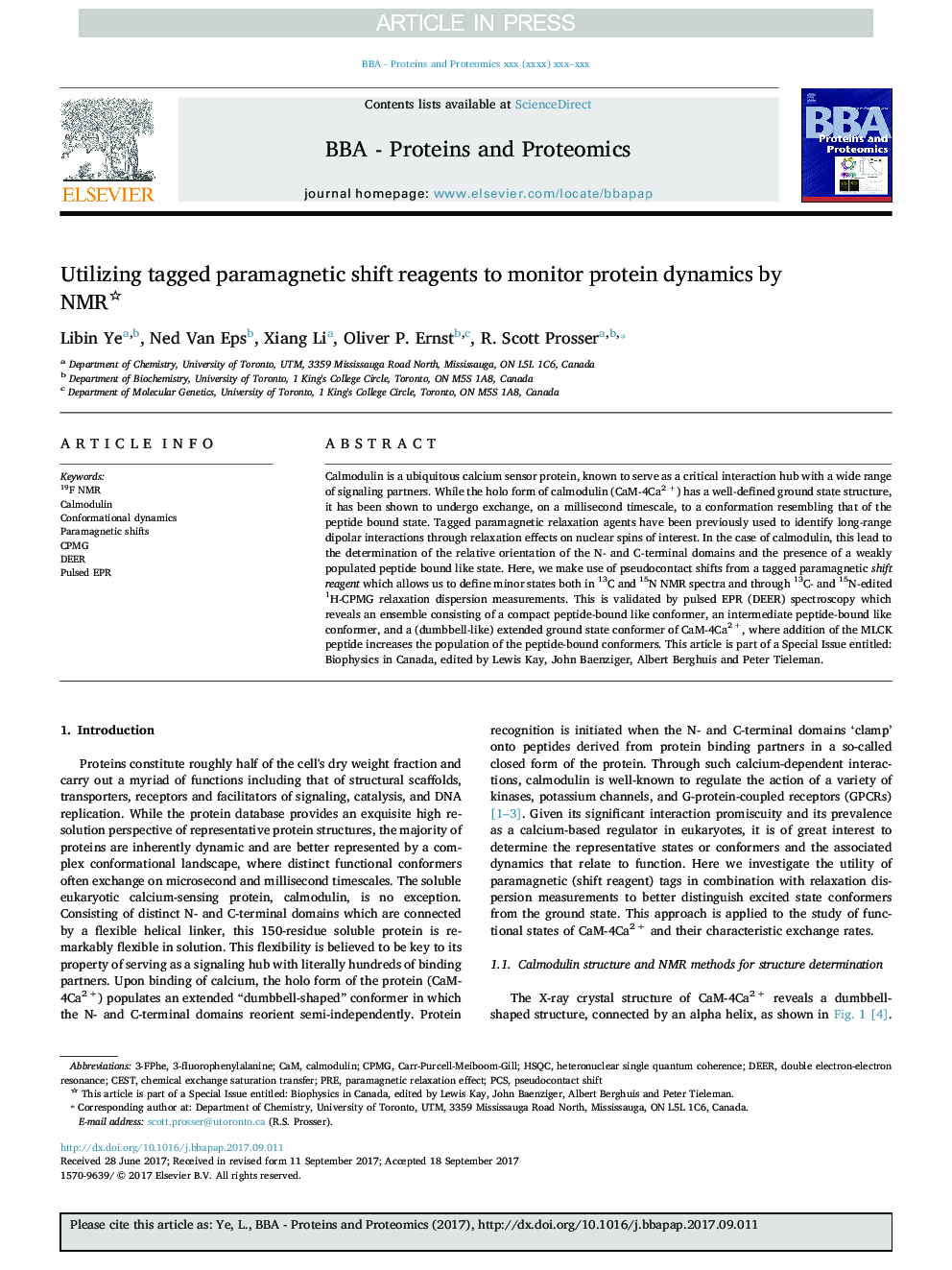| Article ID | Journal | Published Year | Pages | File Type |
|---|---|---|---|---|
| 7560682 | Biochimica et Biophysica Acta (BBA) - Proteins and Proteomics | 2017 | 9 Pages |
Abstract
Calmodulin is a ubiquitous calcium sensor protein, known to serve as a critical interaction hub with a wide range of signaling partners. While the holo form of calmodulin (CaM-4Ca2Â +) has a well-defined ground state structure, it has been shown to undergo exchange, on a millisecond timescale, to a conformation resembling that of the peptide bound state. Tagged paramagnetic relaxation agents have been previously used to identify long-range dipolar interactions through relaxation effects on nuclear spins of interest. In the case of calmodulin, this lead to the determination of the relative orientation of the N- and C-terminal domains and the presence of a weakly populated peptide bound like state. Here, we make use of pseudocontact shifts from a tagged paramagnetic shift reagent which allows us to define minor states both in 13C and 15N NMR spectra and through 13C- and 15N-edited 1H-CPMG relaxation dispersion measurements. This is validated by pulsed EPR (DEER) spectroscopy which reveals an ensemble consisting of a compact peptide-bound like conformer, an intermediate peptide-bound like conformer, and a (dumbbell-like) extended ground state conformer of CaM-4Ca2Â +, where addition of the MLCK peptide increases the population of the peptide-bound conformers. This article is part of a Special Issue entitled: Biophysics in Canada, edited by Lewis Kay, John Baenziger, Albert Berghuis and Peter Tieleman.
Keywords
Related Topics
Physical Sciences and Engineering
Chemistry
Analytical Chemistry
Authors
Libin Ye, Ned Van Eps, Xiang Li, Oliver P. Ernst, R. Scott Prosser,
